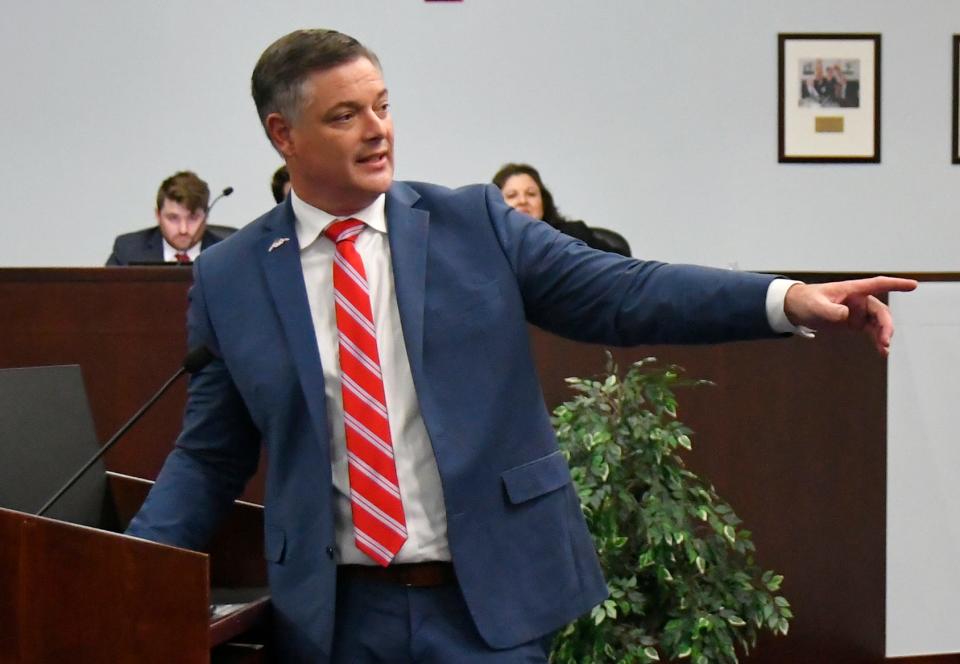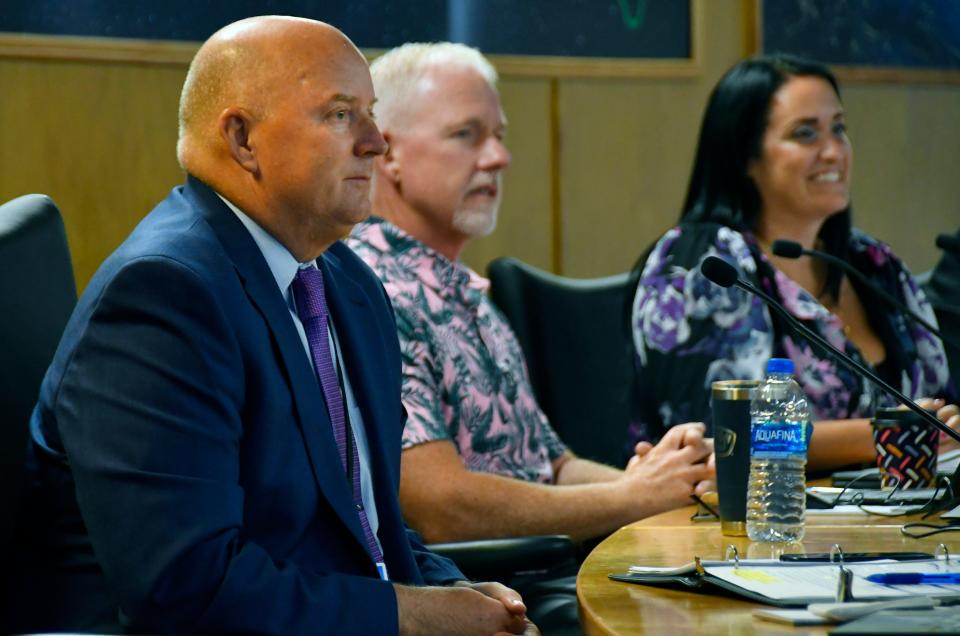Brevard school board: 'Better training' explains 10,000-plus spike in discipline referrals
Nearly a year ago, Brevard Public Schools board member Matt Susin promised an overhaul of the district's discipline policies. In March, an audit of these procedures recommended creating a centralized discipline office to reduce confusion among staff and administrators related to entering discipline referrals — a suggestion that has gone unheeded by Superintendent Mark Rendell.
During a Tuesday work session, discipline statistics for both this year and last year were presented to the board, along with changes made in how referrals are being handled, staff is being trained and more. The numbers have jumped by more than 10,000 compared to last year — something to be expected with staff better trained to record discipline referrals than they previously were, Susin said.
"The amount of things that were not being reported last year, had they been reported, I feel would have shown a significantly higher amount of reporting than we have today," he said. "The changes that we've made to collecting the data ... are now getting crossed by your team to make sure that they are."

Review committee coming back: Brevard Schools book review committee set to resume soon; unclear who will be on it
Guns in schools: Brevard Schools considers expansion of program that would allow teachers to be armed
Higher discipline numbers, but better referral process, district says
The rate of discipline referrals increased by more than 10,000 between this time last year and now, with data showing a total of 8,543 referrals among 5,210 students in the first quarter of the 2022-2023 school year, and 21,501 referrals among 8,818 students during the first quarter of the 2023-2024 school year. The types of incidents remained similar, with willful disobedience ranked at No. 1 for both years.
Two major differences from the previous year: Physical aggression among pre-K through second-grade students made the top 10 list of incidents for 2023-2024, while non-SESIR fighting was no longer on the list. SESIR, which stands for School Environmental Safety Incident Reporting, is a system the state uses for coding incidents that are severe enough to be reported to school resource officers or law enforcement.
The district also compared their top 10 corrective actions taken against students this year and last year. Out-of-school suspensions ranked higher than they did the previous year, though this was because the district changed the way they report suspensions. Previously, there were four codes for suspensions, while this year, they have reduced that number to one.

"It makes sense that all suspensions are adding cumulatively this year," director of student services Chris Reed said.
The jump in all numbers is to be expected with the new processes in place, Susin said.
"I would say that anybody that compares last year's data to this year's data is doing a significant (disservice) in looking at it," he said. "If there's anybody that looks at what we had last year as a bsae point, what we have this year is significantly incorrect to even try to compare the two."
Staff must now report discipline referrals within 24 hours of the incident occurring — a new procedure that was implemented this year to cut down on incidents not being reported properly or going completely unreported.
Expulsion packets also have a same-day submission requirement.
"Those two things have been exceptionally helpful as far as coaching our staff," Reed said.
The district also updated how they handle Title IX cases, with principals now trained to help make decisions rather than escalating it to the district level.
No centralized discipline office, despite recommendation
An audit of the district's discipline processes, completed in March, revealed the biggest problem was a lack of a centralized office. This left teachers, principals and administrators responsible for handling discipline, leading to confusion and room for mistakes, said then-acting superintendent Sue Hann.
At the time, her goal was to set up a centralized group for discipline with a cabinet-level position. However, Superintendent Mark Rendell has opted not to create such a position, instead dividing discipline responsibilities between Chief of Schools James Rehmer III and student services.
More: With Cocoa Beach population falling, so is enrollment at two traditional elementary schools
Their responsibilities overlap, with Rehmer handling implementation, corrections, compliance and problem-solving, student services oversees processes and procedures, compliance protocols, administrative hearings and problem solving.
Pamela Dampier, assistant superintendent of student services, said Rehmer and student services "work in tandem to ensure compliance and discipline reporting."
"It was important that we make sure that there (were) processes in place for reporting correctly," Dampier said.
Concerns about disproportionate rates of discipline
Board member Jennifer Jenkins brought up concerns about disproportionate rates of discipline among Black students and non-gifted special education students. Both groups saw the highest rates of discipline in the first quarter of this year and last year.
"When you look at the infractions that our students are doing, it's pretty proportional to the student population ... so white students are doing willful disobedience at a certain rate that is proportionate to their population, as are Black students, for almost every single infraction," Jenkins said.
"But it seems like the punishment is different or more extreme for Black students and our students with disabilities, and that is concerning to me."
More: Brevard legislators hear from constituents on everything from lagoon cleanup to gun rights
Jenkins brought up the district's risk ratio, which is number that the state department of education uses to determine is the district is "at risk" based on the number of suspensions a certain population has. A number of 3 is considered at risk. For the first quarter of this school year, all populations were below three, though both Black and disabled students were at a risk of 2.6376 and 2.1771 respectively. All other populations were below 1.2.
"We should be concerned as a district that there's a gap, there's such a significant gap," she said. "We need to put our eyes on it when we're over 2.5, and we're over that 2.5 (for Black students), and quite frankly, we've been there. We've been there for a very long time."
Dampier said student services visits schools that are marked at over 2.5 to create a plan as to how to address student needs.
"We're going to be monitoring that ... and monitoring for implementation," she said of the plans these schools must create.
Finch Walker is the education reporter at FLORIDA TODAY. Contact Walker at 321-290-4744 or fwalker@floridatoday.com. X: @_finchwalker.
This article originally appeared on Florida Today: Jump in discipline referrals to be expected, Brevard school board says

